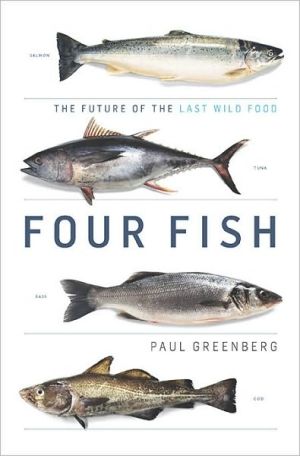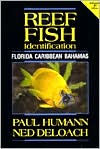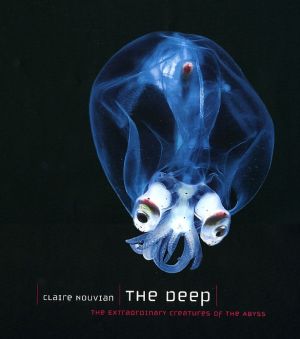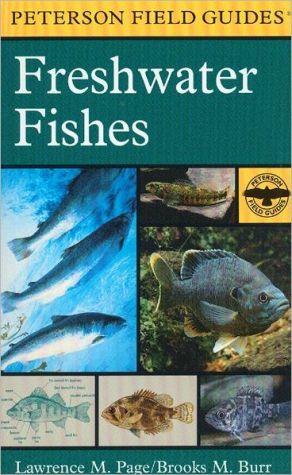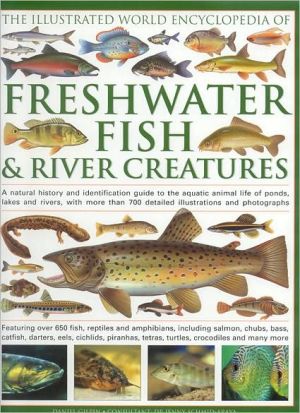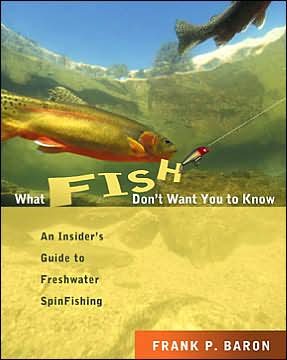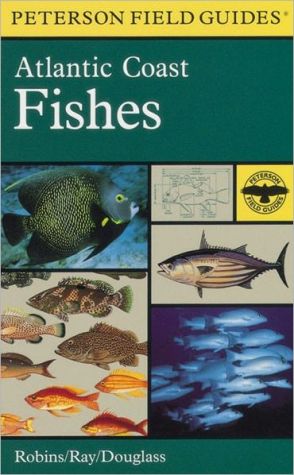Four Fish: The Future of the Last Wild Food
Winner of the 2011 James Beard Foundation Award for Writing & Literature\ Our relationship with the ocean is undergoing a profound transformation. Just three decades ago nearly everything we ate from the sea was wild. Today rampant overfishing and an unprecedented biotech revolution have brought us to a point where wild and farmed fish occupy equal parts of a complex and confusing marketplace. We stand at the edge of a cataclysm; there is a distinct possibility that our children’s...
Search in google:
Our relationship with the ocean is undergoing a profound transformation. Whereas just three decades ago nearly everything we ate from the sea was wild, rampant overfishing combined with an unprecedented bio-tech revolution has brought us to a point where wild and farmed fish occupy equal parts of a complex and confusing marketplace. We stand at the edge of a cataclysm; there is a distinct possibility that our children's children will never eat a wild fish that has swum freely in the sea. In Four Fish, award-winning writer and lifelong fisherman Paul Greenberg takes us on a culinary journey, exploring the history of the fish that dominate our menus—-salmon, sea bass, cod and tuna-and examining where each stands at this critical moment in time. He visits Norwegian mega farms that use genetic techniques once pioneered on sheep to grow millions of pounds of salmon a year. He travels to the ancestral river of the Yupik Eskimos to see the only Fair Trade certified fishing company in the world. He investigates the way PCBs and mercury find their way into seafood; discovers how Mediterranean sea bass went global; Challenges the author of Cod to taste the difference between a farmed and a wild cod; and almost sinks to the bottom of the South Pacific while searching for an alternative to endangered bluefin tuna. Fish, Greenberg reveals, are the last truly wild food - for now. By examining the forces that get fish to our dinner tables, he shows how we can start to heal the oceans and fight for a world where healthy and sustainable seafood is the rule rather than the exception. The Washington Post - Thomas Hayden The story of overfishing has often been told, though seldom this well…[Greenberg] seamlessly integrates the decline of wild fish with the rise of fish-farming, noting rightly that humanity is in the process of domesticating the oceans, as we long ago tamed the land, and that eliminating all but a few primary food species is a natural consequence. In writing clearly and engagingly about the place of fish in global food markets, he manages also to convey the often-missed reality that fish are not just food, or even animals, but wildlife.
Introduction\ In 1978 all the fish I cared about died. They were the biggest largemouth bass I had ever seen, and they lived in a pond ten minutes’ walk from my house on a large estate in the backwoods of Greenwich, Connecticut, perhaps the most famously wealthy town in America. We did not own the house, the estate, the pond, or the largemouth bass, but I still thought of the fish as my fish. I had found them, and the pond was my rightful hunting ground.\ My mother had rented the house as she would three other homes in Greenwich, because it gave the illusion of magnificent proprietorship. She tended toward small cottages on large estates— converted stables, liverymen’s accommodations that were the unclaimed, declining appendages of older, fading wealth, unsold because of divorces or other family complications, rented out to us for a reasonable fee that would become unreasonable and impel our moving on to other cottages on other collapsing estates.\ Fishing was the one constant during these years. Sensing in it a masculine, character-building quality, my mother arranged it so that the cottages we rented always had access to streams and lakes or abutted other properties we could trespass upon that had such resources. She trusted my instincts for spotting fishy water and used me as a kind of divining rod before signing a lease. And for most of my childhood, we were within a short walk of a potentially fruitful cast. Our longest residence was in the aforementioned house near the giant largemouth bass. In the first two years we lived there, I spent all my summer evenings and weekend mornings pursuing them.\ In the winter of 1978, though, a fierce blizzard hit southern Connecticut. Temperatures were often below zero and at one point it snowed for thirty-three hours straight. Perhaps it was the cold that killed the fish, or the copper sulfate I helped the caretaker drag through the pond the previous summer to manage the algal blooms, or maybe even the fishermen I’d noticed trespassing on the estate one day, scoping out my grounds. But whatever caused it, after that winter never again did I spot a living fish. Of course I tried. I trolled pretty much every square foot after school the following year, often with a neighbor who had moved in after the era of the great fish. When two months of dragging lures up and down the shoreline produced not even a strike, my neighbor finally stuck a pin in my irrational bubble of hope.\ “I don’t care what you say about what was,” I remember him shouting. “There is not a fucking fish in this whole goddamn lake, and I’m never fishing here again.”\ Like any hunter whose grounds have gone bad, I set out looking for new territory. I followed the outflow of the pond down a series of cascades that in turn flattened out into a low, swampy meadow of deep oxbows. Only minuscule shiners, crawfish, and escaped goldfish swam here. Farther and farther I went, until the stream joined a larger river and passage was blocked by a fence that a wealthy landowner had erected. Inspecting a map at the library, I found that this was a significant juncture for my stream (as with “my” pond, I had annexed the stream and referred to it now as “mine”). The point at which it was no longer my stream was where it entered the Byram River, a flow that during the times of Native American sovereignty was called the Armonck, or “fishing place,” but which, according to one local legend, the English renamed because of the native tendency to pester white men with armfuls of shad and herring for trade and the endlessly repeated entreaty “Buy rum? Buy rum?” The Byram continued south for another ten miles after the juncture before widening and finally emptying out into the sea. The beginning of an idea came to me.\ Several hundred dollars made it into my account after an ersatz bar mitzvah that my partially Jewish family cobbled together for me when I turned thirteen, and through a debt-leveraged matching grant from the depths of my mother’s complicated finances I was able to purchase a used aluminum boat and a twenty-horsepower outboard engine. Using her good figure and her ability to forge solidarity with the working classes (she had been a friend of the American socialist Michael Harrington and was an experienced strike aide-de-camp), my mother persuaded the Greenwich harbormaster to let us jump the waiting list for a boat slip at the Grass Island Marina. By the summer of 1981, I had a boat, a place to store it, and several thousand square miles of sea for my own use. Better hunting grounds had been found at last.\ This was not the time of child seats or swallowproof soda-can tabs. No safety seals secured Tylenol bottles or yogurt containers. Today it would be considered parental negligence, but in that first summer of boat ownership my mother would drive me down to the Grass Island Marina, seat belt–less, in her black secondhand luxury- edition Chrysler Cordoba and drop me off at my thirdhand boat. As I finished dumping my gear out of her trunk, she would light a Dunhill cigarette, cough heavily, and then, with a glance in her rearview, speed off into the childless afternoon ahead of her. So, at the age of thirteen, I learned how to navigate and fish on the sea by myself. It wasn’t difficult—I’m sure most children, given the opportunity, could have figured it out. Once upon a time, being thirteen really did mean you were a man. But the feeling of steaming out into open water in pursuit of wild game, leaving the financial and physical constriction of mainland Connecticut behind, was exhilarating.\ I did not have a GPS to plot my position or sonar to help me find fish. There was no cell phone to “check in” with home. I learned to find quarry by chasing flocks of diving terns or following a line of rocks from the shore with the assumption (usually right) that they indicated similar fish-holding rock piles down below the surface. If a rivet came loose from the hull of my boat—a sometime occurrence, since the hull had not been anodized to withstand salt water—I would slip off a flip-flop and hold the errant piece of metal in place with my big toe. I was sometimes able to persuade my older brother to join me, but midway through that first summer he announced that he “no longer wanted to kill things.” I didn’t mind. I was happy to be alone with the fish and the ocean.\ By my second year of boat ownership, I began to understand the flow of fish as they came and left Long Island Sound. St. Patrick’s Day, around when the forsythias first bloomed, was the time to test the mudflats for flounder just off the Indian Harbor Yacht Club docks. By April, when the forsythia shriveled to brown and the dogwoods came into flower, mackerel would have passed into the Sound and blackfish would be on the reefs surrounding Great Captain Island—a sure sign that it was time to put the boat in the water. Soon the lilacs would blossom, heralding the arrival of the first weakfish and porgies in May. And by the time lawns were being mowed with ferocity ashore, bluefish were coming into the harbors, devouring the mackerel and menhaden and everything else that had the misfortune to get in their way.\ Striped bass, the prize of prizes, were also rumored to make an appearance around this time, though for me those fish remained only a rumor—they were already too rare for a poorly skilled captain to find them. By fall, blackfish would arrive again, along with a reappearance of flounder, and by wintertime, when my boat was back on blocks and nothing could be caught, I would enlist the much more substantial financial resources of my father and cajole him into taking me fishing on the Viking Starship party boat out of Montauk, where we would steam miles and miles offshore in search of codfish.\ Before self-sufficiency became trendy and “locavorism” a catchword, I learned how to make my pastime “sustainable.” Season by season I would take my surplus catch to the parking lot of my junior high and sell my fish out of the trunk of my mother’s Cordoba for a dollar a pound. The miserably paid teachers would crowd around, and by the end of a sales session I would have enough cash on hand to buy gas for the next trip out.\ The years of my boat and “my” ocean gave me a deep, atavistic belief in the resilience of nature. Even with the proximity of the Gatsbyesque mansions hugging the shorelines, the faint roar of I-95 audible as I cruised the bays, and all the other evidence of human civilization, Long Island Sound still felt to me like wilderness—a place to freely search out and capture wild game. I thought of the sea as a vessel of desires and mystery, a place of abundance I did not need to question. The ocean provides, therefore I fish. During my childhood I was often reminded how wealthy my neighbors and schoolmates were and how insecurely my family lived by comparison. The sea, meanwhile, was the great leveler. No fisherman, no matter how rich, had any more right than I did to a huge expanse of territory and resources.\ But the desire to pursue fish and the desire to pursue females of your own species are inversely proportional. The fishing jones waxes from about age seven until sixteen or so and then abruptly withers in the harsh hormonal light of adolescence. Brief hot flashes of the fishing urge come on at times in the high teens, but they have an unanchored quality. The prime directive of life has shifted, and dusk no longer conjures the possibility of seabirds diving into a school of breaking game fish, but rather the moment when perfume and perspiration waft into the air, intermingled.\ The summer I turned eighteen, my boat never left the two sawhorses it sat upon in wintertime, and it moldered, barnacle-covered, like a nautical version of Shel Silverstein’s The Giving Tree, in the grassy parking spot adjacent to the last of my mother’s rental cottages. And by the time I was nineteen and in college, I no longer came back to Long Island Sound. My mother sold my boat when I turned twenty. Fishing had done whatever good it was going to do for me as a man, she figured, and that was that.\ But while erotic love between two parties tends to vanish for good when it exits, the bond between fishers and fishing has a way of circling back and restoring itself along different lines. After a decade and a half of various romantic false starts, often abroad, I found myself on the East Coast in my early thirties with a renewed desire to fish. Yet, like all mature loves, this next fishing phase aroused suspicion as well as pleasure.\ The second fishing period of my life was also brought on by my mother. I had recently returned from working in Bosnia, a frustratingly landlocked and ruined place, where the best spots for natural idylls had been rolled over by tanks or scavenged to the bone by refugees. I often found myself staring down into the Drina River near the bullet-pocked city of Mostar, bluer than blue, but ultimately fishless from four years of war and subsistence angling.\ During my time abroad, my mother and I had grown estranged and spoke rarely. This continued until she quickly ended the estrangement by receiving a diagnosis of metastatic lung cancer. I quit my job and spent the spring with her. Most of the afternoons of these three bad months were at her bedside, and, as can happen with someone fast approaching death, conversations were far-ranging, mundane, significant, and entirely out of context. Toward the middle of the second month, a clarity came over her; she could see the strain that her bad end was putting on me. One afternoon she sat up in bed and attempted to fix her wandering eyes into a focused, important stare. “Why don’t you go fishing?” she asked, then fell back in a coughing fit.\ Fishing? What a thought! But then again, why not? My brother was on hand to take care of our mother for the few days I’d be gone. It was April. A good fishing time for the East Coast, as I remembered it. Forsythias were still in bloom, and dogwoods were coming on, which meant flounder, blackfish, and mackerel. But when I called around to the tackle shops I had frequented in my youth, I found that the narrative of the spring migration had changed. The flounder season had been curtailed to only a few short weeks, and people spoke of a two-fish outing as a banner day, whereas once we had caught bucketfuls. Blackfish were hard to come by. Mackerel had not entered the eastern half of the sound in any numbers in a decade. A little bit farther afield, codfish that I used to catch with my father on divorced-dad weekends aboard the massive Viking Starship were almost nonexistent. There had to be fish out there somewhere, but the terrain had changed and I didn’t know how to find my bearings. And when my mother finally died in June of 2000 and we spread her ashes at Tod’s Point in Greenwich, the anglers who worked the shoreline there were fewer than I remembered and their buckets were generally empty.\ Loss can have a tricky way of playing itself out in the mind of the loser. A psychologist once told me that in the face of loss either you can grieve the lost thing or you can incorporate it into your very being and thus forestall the grieving. Fishing somehow came to be that lost thing I clung to. With the help of my mother’s 1989 Cadillac Brougham, a car she’d scarred badly on a stone pillar when the half dozen tumors in her brain had partially blinded her, I drove up and down the Connecticut and Long Island shores, northward to Massachusetts and Maine, and south again through the Carolinas and Florida, fishing all the way. And all the way, fisherman after fisherman echoed the same complaints: smaller fish, fewer of them, shorter fishing windows, holes in the annual itineraries of arrivals and departures, fewer species to catch.\ In addition to fishing, I did one other thing that had been a habit of my former fishing self—I visited fish markets and tried to divine the provenance of what was on ice. The difference was palpable. If, after taking in a screening of the movie Jaws in the summer of 1975, you were to walk down to the bottom of Greenwich Avenue to the Bon Ton Fish Market near Railroad Avenue (as I did on many occasions), you would likely have found at least a dozen varieties of finfish displayed. Many of those fish would be from local waters. All of them would be wild-caught. They would buoy you up with their size and color, the clearness of their eyes, and the fresh quality of their skin.\ But in the early 2000s, as I traveled the eastern seaboard, I saw that a distinctly different kind of fish market was taking shape. Abundance was still the rule, and yes, I still saw groupings of many species that could give the impression of variety and richness. But like anyone who fishes regularly, I have some ability for decoding the look of fish flesh, and I can usually tell how long ago a fish was caught and whether the names fish are sold under are quaint localisms or intentional obfuscations of something alien from far away. What I noticed was that in the center of the seafood section, whether I was in Palm Beach, Florida; Charleston, South Carolina; or Portland, Maine, four varieties of fish consistently appeared that had little to do with the waters adjacent to the fish market in question: salmon, sea bass, cod, and tuna.\ Just as seeing my stream entering the Byram River had given me the idea to pursue the wider world of the ocean, seeing this peculiarly consistent flow of four fish from the different waters of the globe into the fish markets of America drew me again beyond the familiar to find out what had happened. I spent the next few years, sometimes on my own recognizance, sometimes for the New York Times, traveling to places I had previously only read about in the pages of Field & Stream and Salt Water Sportsman.\ The more I examined the life cycles and the human exploitation of salmon, sea bass, cod, and tuna, the more I realized that my fishing history and the fishing history of humankind followed a similar pattern. Just as I had started out inland in a freshwater pond and then made my way down a river to coastal salt water when my grounds had gone bad, so, too, had early human fishers first overexploited their freshwater fish and then moved down the streams to their coasts to find more game. And just as I later turned to the resources of my father to take me far offshore to catch codfish beyond sight of land, so, too, had humans marshaled the resources of industry into building offshore fishing fleets when they found their near-shore waters incapable of bearing humankind’s growing burden.\ The more I thought of it, the more I realized that the four fish that are coming to dominate the modern seafood market are visible footprints, marking four discrete steps humanity has taken in its attempts to master the sea. Each fish is an archive of a particular, epochal shift. Salmon, a beautiful silvery animal with succulent pink flesh, is dependent upon clean, free-flowing freshwater rivers. It is representative of the first wave of human exploitation, the species that marks the point at which humans and fish first had large-scale environmental problems and where domestication had to be launched to head off extinction. Sea bass, a name applied to many fish but which increasingly refers to a single white, meaty-fleshed animal called the European sea bass, represents the near-shore shallow waters of our coasts, the place where Europeans first learned how to fish in the sea and where we also found ourselves outstripping the resources of nature and turning to an even more sophisticated form of domestication to maintain fish supplies. Cod, a white, flaky-fleshed animal that once congregated in astronomical numbers around the slopes of the continental shelves many miles offshore, heralded the era of industrial fishing, an era where mammoth factory ships were created to match cod’s seemingly irrepressible abundance and turn its easily processed flesh into a cheap commoner’s staple. And finally tuna, a family of lightning-fast, sometimes thousand-pound animals with red, steaklike flesh that frequent the distant deepwater zones beyond the continental slope. Some tuna cross the breadth of the oceans, and nearly all tuna species range across waters that belong to multiple nations or no nation at all. Tuna are thus stateless fish, difficult to regulate and subject to the last great gold rush of wild food—a sushi binge that is now pushing us into a realm of science-fiction-level fish-farming research and challenging us to reevaluate whether fish are at their root expendable seafood or wildlife desperately in need of our compassion.\ Four fish, then. Or rather four archetypes of fish flesh, which humanity is trying to master in one way or another, either through the management of a wild system, through the domestication and farming of individual species, or through the outright substitution of one species for another.\ This is not the first time humanity has glanced across the disorderly range of untamed nature and selected a handful of species to exploit and propagate. Out of all of the many mammals that roamed the earth before the last ice age, our forebears selected four—cows, pigs, sheep, and goats—to be their principal meats. Out of all the many birds that darkened the primeval skies, humans chose four— chickens, turkeys, ducks, and geese—to be their poultry. But today, as we evaluate and parse fish in this next great selection and try to figure out which ones will be our principals, we find ourselves with a more complex set of decisions before us. Early man put very little thought into preserving his wild food. He was in the minority in nature, and the creatures he chose to domesticate for his table were a subset of a much greater, wilder whole. He had no idea of his destructive potential or of his abilities to remake the world.\ Modern man is a different animal, one who is fully aware of his capability to skew the rules of nature in his favor. Up until the mid twentieth century, humans tended to see their transformative abilities as not only positive but inevitable. Francis Galton, a leading Victorian intellectual, infamously known as the founder of eugenics but also a prolific writer on a wide range of subjects including animal domestication, wrote at the dawn of the industrialization of the world’s food system, “It would appear that every wild animal has had its chance of being domesticated.” Of the undomesticated animals left behind, Galton had this depressing prediction: “As civilization extends they are doomed to be gradually destroyed off the face of the earth as useless consumers of cultivated produce.”\ And that brings us to the present day, the crucial point at which we stand in our current relationship with the ocean. Must we eliminate all wildness from the sea and replace it with some kind of human controlled system, or can wildness be understood and managed well enough to keep humanity and the marine world in balance?\ In spite of the impression given by numerous reports in the news media, wild fish still exist in great numbers. The wild harvest from the ocean is now around 90 million tons a year. The many cycles and subcycles that spin and generate food are still spinning, sometimes with great vigor, and they require absolutely no input from us in order to continue, other than restraint. In cases where grounds have been seemingly tapped out, ten years’ rest has sometimes been enough to restore them to at least some of their former glory. World War II, while one of the most devastating periods in history for humans, might be called “The Great Reprieve” if history were written by fish. With mines and submarines ready to blow up any unsuspecting fishing vessel, much of the North Atlantic’s depleted fishing grounds were left fallow and fish increased their numbers significantly.\ But is modern man capable of consciously creating restraint without some outside force, like war? Is there some wiser incarnation of the hunter-gatherer that will compel us to truly conserve our wild food, or is humanity actually hardwired to eradicate the wild majority and then domesticate a tiny subset? Can we not resist the urge to remake a wild system, to redirect the energy flow of that system in a way that serves us?\ In his landmark 1968 essay in the journal Science, “The Tragedy of the Commons,” the ecologist Garret Hardin noted that “natural selection favors the forces of psychological denial. The individual benefits as an individual from his ability to deny the truth even though society as a whole, of which he is a part, suffers.” What we have seen up until now, with both the exploitation of wild fish and the selection and propagation of domestic fish, is a wave of psychological denial of staggering scope. With wild fish we have chosen, time after time, to ignore the fundamental limits the laws of nature place on ecosystems and have consistently removed more fish than can be replaced by natural processes. When wild stocks become overexploited, we have turned to domestication. But the fish we have chosen to tame are by and large animals that satisfy whimsical gustatory predilections rather than the requirements of sound ecologically based husbandry. All these developments have gone on underwater and out of sight of the average modern seafood eater. We eat more fish every year, not just collectively but on a per capita basis, pausing only (and only briefly) when evidence surfaces of the risk of industrial contaminants in our seafood supply. Under the umbrella of these collective acts of denial, individual and corporate rights, national prejudices, and environmental activism have been cobbled together into something government officials like to call “ocean policy.” In fact, there is no “ocean policy” as such, at least none that looks at wild and domesticated fish as two components of a common future.\ But now, as wild and domesticated fish reach a point where they are nearly equal parts of the marketplace, this is just the kind of ocean policy we need. And in telling the story of four fish, for which the collision of wildness and domestication is particularly relevant, I shall attempt to separate human wants from global needs and propose the terms for an equitable and long-lasting peace between man and fish.
\ From Barnes & NobleFix the Farm, Not the Salmon\ By Paul Greenberg \ When the New York Times reported in June of 2010 that the US Food and Drug Administration was “seriously considering” approving a genetically modified Atlantic salmon for American consumption the cries from environmentalists and food reformers were, predictably, almost audible on the streets. The AquAdvantage® Salmon uses a “genetic on-switch” from a fish called an ocean pout (a very different animal) in combination with a growth gene from a Chinook salmon to achieve double the growth rate of the unmodified creature. The animal’s creator, AquaBounty Technologies of Waltham, MA asserts that the fish will be sterile and grown in out-of-ocean bio-secure containment structures. Nevertheless the emotional worry of genetic contamination of wild fish, the public preoccupation with health risks a modified salmon could pose, and just the overall ick-factor consumers seem to have about GMO food were all on display across the foodie and environmental blogosphere a few days after the Times article ran.\ But, curiously, perhaps the loudest groan that I heard in response to the AquaBounty successes came from salmon farmers. “What I have been noticing over the years,” Thierry Chopin, an aquaculture researcher based in New Brunswick, Canada wrote me, “is that the aquaculture industry is not jumping to embrace what AquaBounty has been proposing.” For years salmon farmers have been waging a public relations war, trying to gain legitimacy as an industry that could be both profitable and produce more food for a hungry world. When a paper published in the journal Nature in 2000 revealed that it took more than three pounds of wild forage fish to grow a single pound of farmed salmon, the salmon industry responded through selective breeding, increased use of soy and other agricultural products and more efficient feeding practices to lower the wild fish use of farmed salmon to the point where some farms claim to have achieved a fish in-fish out ratio of close to 1 pound of wild fish for 1 pound of farmed salmon. When diseases like infectious Salmon Anemia and parasites like sea lice began to run rampant on salmon farms around the world, some regions, like the Bay of Fundy in Canada, instituted better fallowing and crop rotation practices and appear to have had some success in breaking disease and parasite cycles. But in spite of these improvements, a single mention of transgenic salmon in a major media outlet is enough to spoil whatever gains the industry has made in public perception. Indeed, many lay-people I talk with have the impression that transgenic salmon are already a regular part of the farmed salmon market, this despite the fact that there are still no transgenic salmon sold in the United States or anywhere else that I’ve encountered.\ Don’t get me wrong. I sincerely do not believe that the salmon industry has solved its environmental problems. But I do think that it suffers an unfair association with the AquaBounty project and that genetic modification distracts from what investment and research really needs to address. The two biggest problems with farming salmon are:\ \ Salmon are grown in sea cages, often anchored amidst wild salmon migration routes. This can cause the fouling of waters with wastes and the transmission of diseases and parasites to already seriously threatened and endangered stocks of wild salmon. Selectively bred fish regularly escape and some suggest they may interfere with the lifecycles of wild fish. Even worse, entirely different species of salmon are often raised in non-native environments. Atlantic salmon are regularly farmed in the Pacific and often escape.\ Farmed salmon consume a huge amount of wild forage fish. Even though feed efficiency on a per fish basis has improved dramatically, salmon farming overall has grown so much that the per-fish efficiency has been all but erased by a much larger overall presence of salmon farming in the world. Atlantic salmon, once limited to the northern latitudes of the northern hemisphere, are now farmed on every single continent save Antarctica. It’s possible farmed salmon escapees may have even reached that most southerly redoubt. Salmon farms exist as far south as Patagonia, South Africa and Tasmania.\ \ So what is the way forward and how do we deal with this transgenic issue? If I were tsar of all salmon farming and could redirect investment money at will, I might take all of those dollars that go into transgenic research and put that money into really confronting the problems that plague the industry. I might look to developing efficient, above ground, re-circulating aquaculture systems. These facilities allow fish to be grown in temperature-controlled environments without any interaction with the wild. Disease transfer and genetic pollution are greatly reduced if not eliminated altogether. Yonathan Zohar a professor and Chair of the Department of Marine Biotechnology at the University of Maryland Baltimore County's has created a test facility right in downtown Baltimore that grows an array of species and even manages to recycle the fish wastes into fuel-grade methane gas that can be used to run pumps or heat water. Though these systems are energy intensive the ability to build them in proximity to markets lessens food miles. Furthermore recirculating systems offer precisely controlled growing conditions and can bring fish to market in half the time as open sea cages.\ I might also try to expand on the work of Thierry Chopin who is piloting a program of Integrated Multi-Trophic Aquaculture or IMTA where mussels, edible seaweeds, and sea cucumbers are grown in conjunction with salmon in a complex polyculture. Rather than just trying to make an artificially efficient modified salmon, Chopin is trying to make a more efficient system where multiple crops radiate out from a single feed source. Because mussels, sea cucumbers and sea weed can all metabolize the wastes from salmon, they have a potential to neutralize and reuse the effluent that has plagued salmon farms in the past.\ Another place I might put my salmon dollars would be the development of alternative feeds that are synthesized from soy and algae and might eventually obviate the need for using wild forage fish in salmon feed.\ Finally, I might consider investing in a different fish altogether. Some critics of the aquaculture industry believe we should do away with the farming of salmonids altogether. But to my eye, there is a very entrenched market for salmon flesh and we might be better served finding a different salmon-like fish that has a smaller footprint. The most hopeful alternative I’ve come across is a fish called the arctic char. The arctic char is from the same taxonomic family as salmon, has pretty good feed conversion ratios, rich flesh, and most interestingly of all, because it frequently finds itself crammed into close quarters when its natural arctic lakes freeze, it has high disease resistance and takes extremely well to high stocking densities—densities that are necessary to make out-of-ocean aquaculture operations profitable. And this is exactly what’s happening with char. Most are grown in re-circulating, above ground tanks in Iceland and Canada.\ Of course some people will never embrace a farmed solution for fish. There is a camp that feels very strongly that farmed fish are uniformly bad for the world and inferior on the plate. I have to confess that I don’t always share this opinion. Arctic char strike me as a good environmental compromise and to my palate, they’re pretty tasty.\ \ \ \ \ \ Kirkus ReviewsAn award-winning food journalist brilliantly dissects the relationship between humans and the four fish that dominate the seafood market. Greenberg (Leaving Katya, 2002) addresses how nations can make smarter choices about managing resources and how the individual seafood-lover can support those choices at the dinner table, but he also examines a series of smaller issues: how farmed salmon-an industry badly in need of reform-has inspired a taste for its wild ancestor, why tilapia has suddenly shown up in the market, how the rage for sushi poses new regulatory challenges, why taming sea bass makes little sense. This readable account of our hunt for wild fish and our attempt to domesticate them for consumption will remind many readers of Mark Kurlansky's bestseller Cod (1997), and for good reason. Kurlansky is cited as an authority and even appears as a character in Greenberg's fish story, a pleasing amalgam of memoir, travelogue, history, scientific inquiry, plea for reform and even tasting menu. In colorfully anecdotal, appealing prose, Greenberg focuses on our pursuit of salmon, sea bass, cod and tuna. Each represents an evolutionary step for humans farther out into the ocean. Taken together, they recapitulate humankind's historic attempt at mastery of the sea, "either through the management of a wild system, through the domestication and farming of individual species, or through the outright substitution of one species for another." The author offers prescriptions for managing marine ecosystems and a wise set of principles to guide us forward with domestication, but the tone is never preachy. The narrative is grounded in common sense and anchored by first-rate, on-scene reporting from the Yukon and Mekong Rivers, Lake Bardawil in the Sinai Peninsula and the waters off the coasts of Long Island, Greece, Hawaii and the Shetland Islands. Hugely informative, sincere and infectiously curious and enthusiastic.\ \ \ Sam Sifton"The passion to save bluefin is as strong as the one to kill them," Greenberg writes, "and these dual passions are often contained within the body of a single fisherman." Four Fish is a marvelous exploration of that contradiction, one that is reflected in the stance and behavior of all nations that fish. It is a necessary book for anyone truly interested in what we take from the sea to eat, and how, and why.\ —The New York Times\ \ \ \ \ Thomas HaydenThe story of overfishing has often been told, though seldom this well…[Greenberg] seamlessly integrates the decline of wild fish with the rise of fish-farming, noting rightly that humanity is in the process of domesticating the oceans, as we long ago tamed the land, and that eliminating all but a few primary food species is a natural consequence. In writing clearly and engagingly about the place of fish in global food markets, he manages also to convey the often-missed reality that fish are not just food, or even animals, but wildlife.\ —The Washington Post\ \
